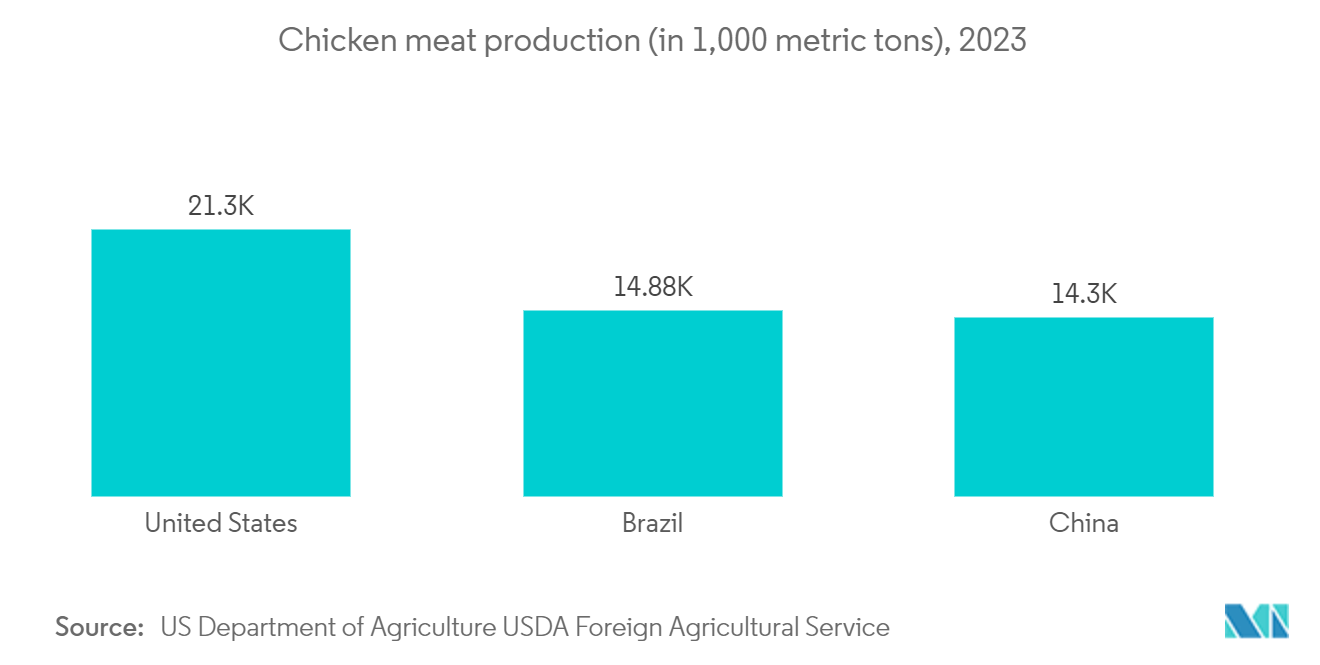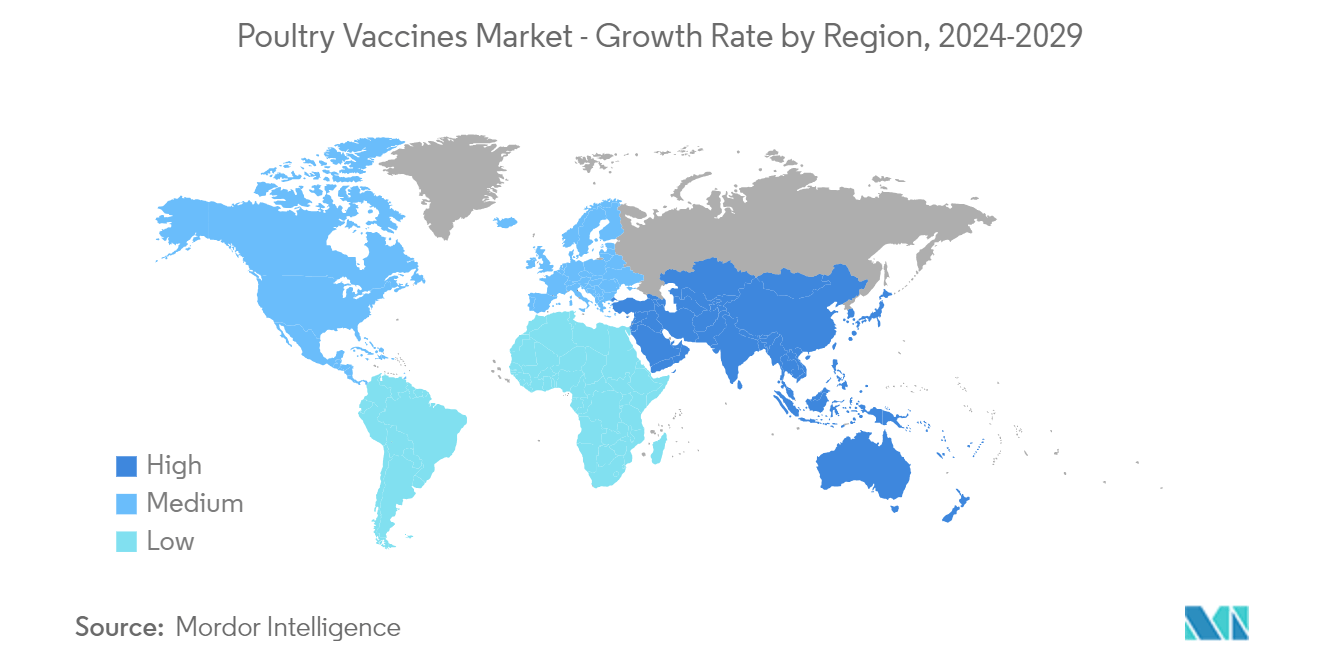Market Trends of Poultry Vaccines Industry
The Segment for Avian Influenza is Expected to Lead the Market in the Coming Years
Avian influenza, commonly known as bird flu, continues to pose a significant threat to global poultry production and public health. With outbreaks occurring periodically, the avian influenza market is witnessing a notable increase in demand for preventive and control measures. Avian influenza is transmitted to human beings by direct contact. Disease outbreaks have been reported in countries such as the United States, Asia, and Europe.
Avian influenza outbreaks have been documented across various regions, impacting both commercial and backyard poultry flocks. The highly pathogenic nature of some avian influenza strains, such as H5N1, H5N8, and H7N9, has led to substantial economic losses in the poultry industry due to mortality, trade restrictions, and control measures.
Government agencies worldwide are implementing regulations and control measures to mitigate the risk of avian influenza spread and transmission. These measures include surveillance programs, biosecurity protocols, movement restrictions, and vaccination campaigns. Compliance with these regulations is essential for maintaining poultry health and minimizing the impact of avian influenza outbreaks on public health and food security.
In March 2024, the CDC issued a set of guidelines aimed at detailing their suggestions for averting exposure to highly pathogenic avian influenza (HPAI) A (H5N1) viruses. These recommendations encompass infection prevention and control strategies such as the utilization of personal protective equipment, testing, antiviral therapy, patient inquiries, surveillance of individuals who have been in contact with potentially infected wild or domestic animals, as well as livestock, and the administration of antiviral chemoprophylaxis to those who have been exposed.
Thus, the avian influenza market is witnessing an upward trajectory fueled by increasing incidence rates, growing demand for preventive and control measures, and advancements in research and technology. As the global poultry industry continues to evolve, stakeholders must remain vigilant and proactive in implementing effective strategies to prevent and mitigate the impact of avian influenza outbreaks. Continued investment in research, innovation, and collaboration across industries will be crucial in addressing the challenges posed by avian influenza and ensuring the sustainable growth of the poultry industry.

North America is Expected to Dominate the Market Over the Forecast Period
The North American poultry vaccine market is expected to hold a significant share over the forecast period, owing to factors such as the increase in consumption of poultry-derived products, growing consumer awareness regarding food safety, and increasing incidence of zoonotic diseases associated with poultry.
US poultry products hold leading positions in international and US meat commodity markets, owing to modern poultry genetics, abundant domestic feed resources, competitive production structures, and strong consumer appeal. According to the US Department of Agriculture, the total sales of the poultry sector in 2022 amounted to USD 76.9 billion, an increase of 67% from 2021. Broiler sales increased by 60%, turkey sales increased by 21%, and egg sales increased by 122%. Only broilers increased production in 2021. All the industries were affected by increased prices in 2022, with the egg and turkey industries being particularly impacted by the highly pathogenic avian influenza (HPAI) outbreak.
Increased investment in research and development activities aimed at developing poultry vaccines is driving innovation in the market. Pharmaceutical companies, biotechnology firms, and research institutions are collaborating to develop novel vaccines, diagnostics, and therapeutics to enhance the prevention and control of poultry outbreaks. For instance, In April of 2024, Merck Animal Health revealed that it had signed a deal with Cambridge Technologies, a custom vaccine company in Worthington, Minnesota, to distribute and promote its groundbreaking autogenous poultry vaccines in the American market.
In North America, advancements in vaccine development include the development of live vector vaccines, non-replicating recombinant antigen vaccines, nucleic acid-mediated vaccines, and live-gene-deleted vaccines. This is likely to fuel the market’s growth over the forecast period.


